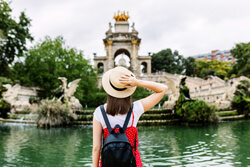If there is one place in Barcelona you can’t miss visiting, it is the El Raval neighborhood. Located in the Ciutat Vella district (Old Town), El Raval is encapsulated between the Eixample and the Gothic Quarter, from which it is separated by the famous La Rambla.
El Raval was a forgotten area of the city, associated with crime and social issues. Today, the neighborhood looks anything but: it’s packed with shops, restaurants, and cultural venues. This big revamp happened during the 1992 Olympic Games, when Barcelona won the bid to host it.
The name of this neighborhood, El Raval, comes from the Arabic “al rabat”, which means “city’s outskirts,” as it was outside the limits of Medieval Barcelona. In big contrast to its origin, El Raval is among the most densely populated areas of Barcelona, a lively district boasting lots of things to do. Keep reading to discover the best things to do in El Raval, Barcelona.
What to Do in El Raval, Barcelona
1. Carrer Tallers
Carrer Tallers is a narrow street perpendicular to la Rambla dating back to Medieval times. Besides its incredible charm, this street boasts an eclectic mix of shops.
Historically, Carrer Tallers was the street for shopping vinyl. You can spend hours strolling up and down and getting lost inside edgy music stores browsing for hard-to-find CDs and vinyl. If you prefer shopping for clothing, Carrer Tallers is also the place to be in Barcelona to find retro gems in the many vintage boutiques.
Once you’ve done shopping, head to Carrer de les Sitges, perpendicular to Carrer Tallers, and stop by the iconic bar L’Ovella Negra (5 Carrer Sitges, opens at 5 pm), a local institution to enjoy a great sangria while mingling with local students.
2. Plaça de Castella and Casa de la Misericòrdia
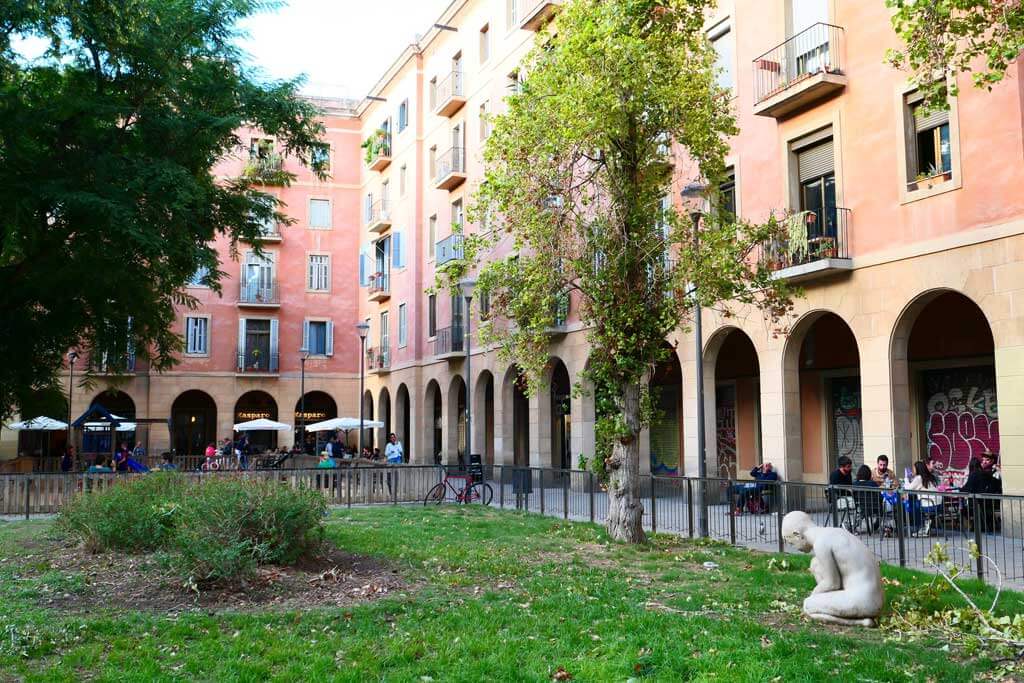
A nice and secluded place for an apéritif and some tapas is Plaça de Castella. This square (the cloister of a convent today disappeared) boasts lovely porticos where you can find lively bars and eateries. All around, there are the remains of religious buildings that house administration offices today.
Among the buildings on the square is the historic La Casa de la Misericòrdia (House of Mercy), which used to be a religious institution that gave shelter to poor or orphaned children.
On the building’s main façade, you can still see the famous turnstile, the round hole closed by a hatch where the kids were left. They were then picked up by the nun on duty.
3. Museu d’Art Contemporani de Barcelona (MACBA)

One of the many museums in the city, the Museu d’Art Contemporani de Barcelona (Plaça dels Angels, closed on Tuesdays) showcases a great collection of art forms from international artists with a focus on pieces made in the second half of the 20th century.
The MACBA is housed in a 1995 building by famous architect Richard Meier, one of the most modern in the El Raval neighborhood. From paintings to sculptures to audio-visual performances, the exhibitions on display change constantly, so you will never see the same things twice! – Click here to book your tickets to the MACBA
Today, the square in front of the building is a favored meeting place for skateboard lovers who perform impressive tricks you will love watching.
4. Keith Haring Wall
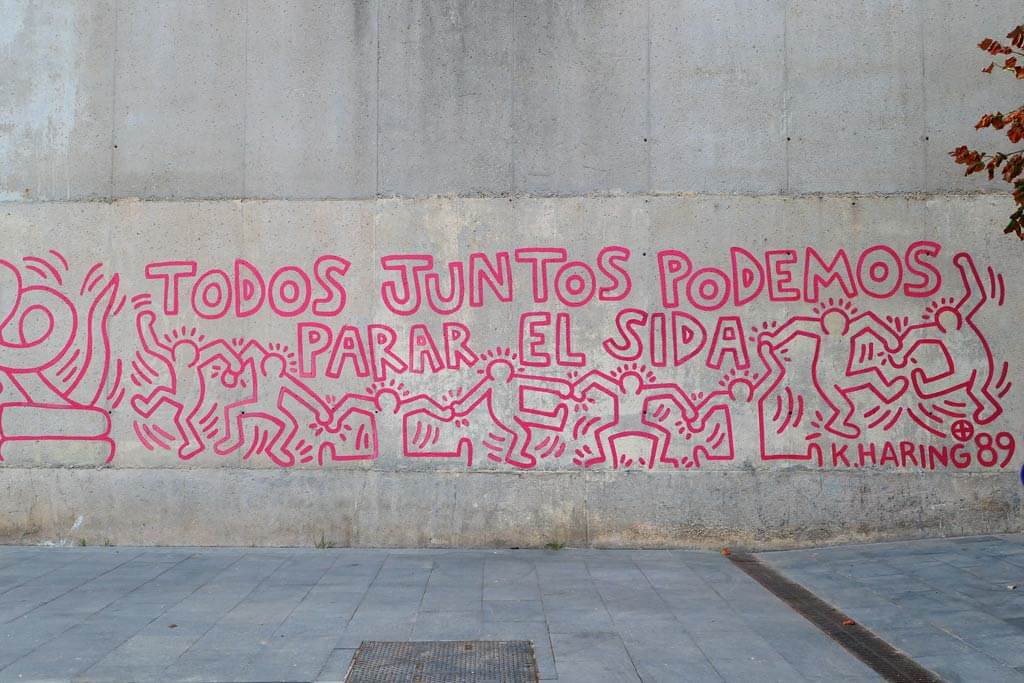
In the El Raval neighborhood, you can discover a mural of talented artist Keith Haring. Originally located in Plaça de Salvador Seguí, the graffiti is today reproduced on a concrete wall near the entrance of the MACBA.
The mural, painted in 1989, is a representation of the AIDS epidemic in the form of a long, red-colored snake spiraling around a syringe and frightening people with it.
However, the positive message of the graffiti is that if people come together, it’s possible to fight the disease, an idea that is explicated by the painted phrase “Todos juntos podemos parar el SIDA” (‘Together we can stop AIDS’).
5. Jardins Rubió i Lluch (Old Hospital’s Gardens)
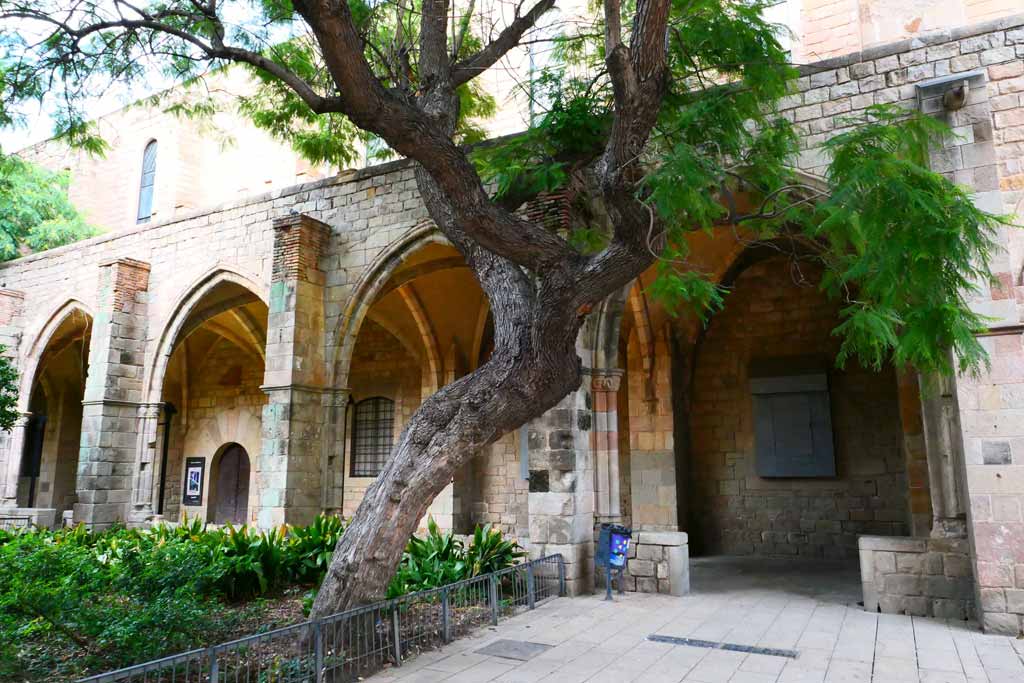
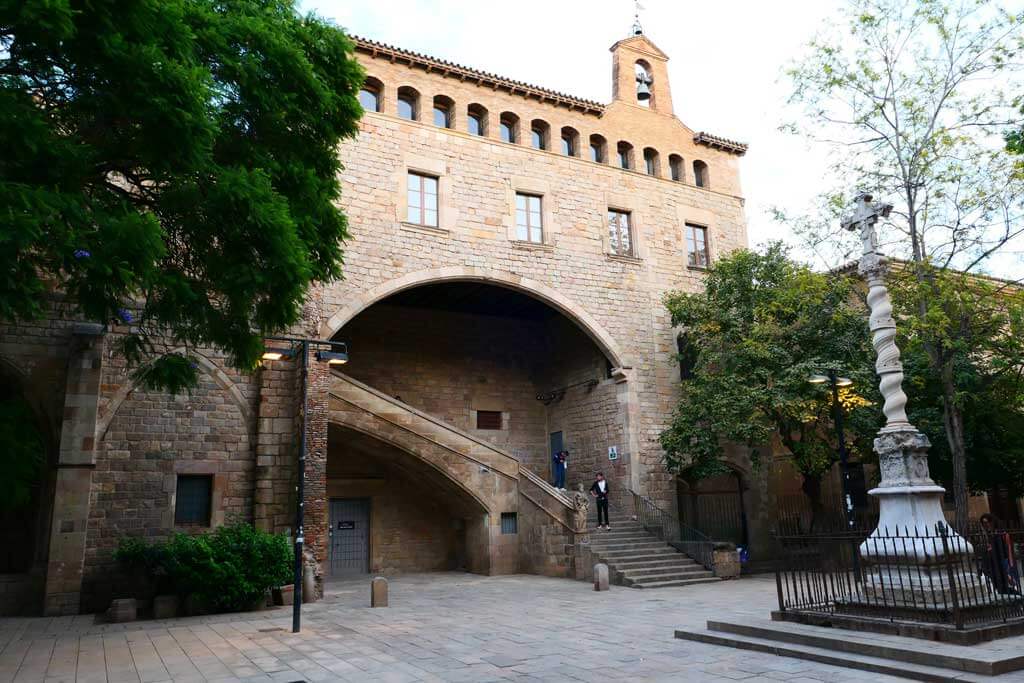
An idyllic oasis in the El Raval neighborhood, just steps behind the noisy La Boqueria Market, the Jardins de Rubio i Lluch is the perfect spot for a middle-day break.
This small garden was the courtyard of the Antic Hospital de la Santa Creu, a working monastery and hospital until 1930. Founded in the 1401, this is one of the oldest hospitals in Europe and the world! The Gothic walls of the building surround the garden, which also boasts a lovely fountain.
The former hospital is today a historic landmark and houses numerous cultural institutions, including the Catalan Library. The garden is mostly frequented by school students and by passers who stop to enjoy the area’s tranquility.
GOOD TO KNOW: This is the hospital where Antoni Gaudi was carried for treatment after he was struck by a tram. He died in the hospital on the 10 June 1926.
6. Rambla del Raval
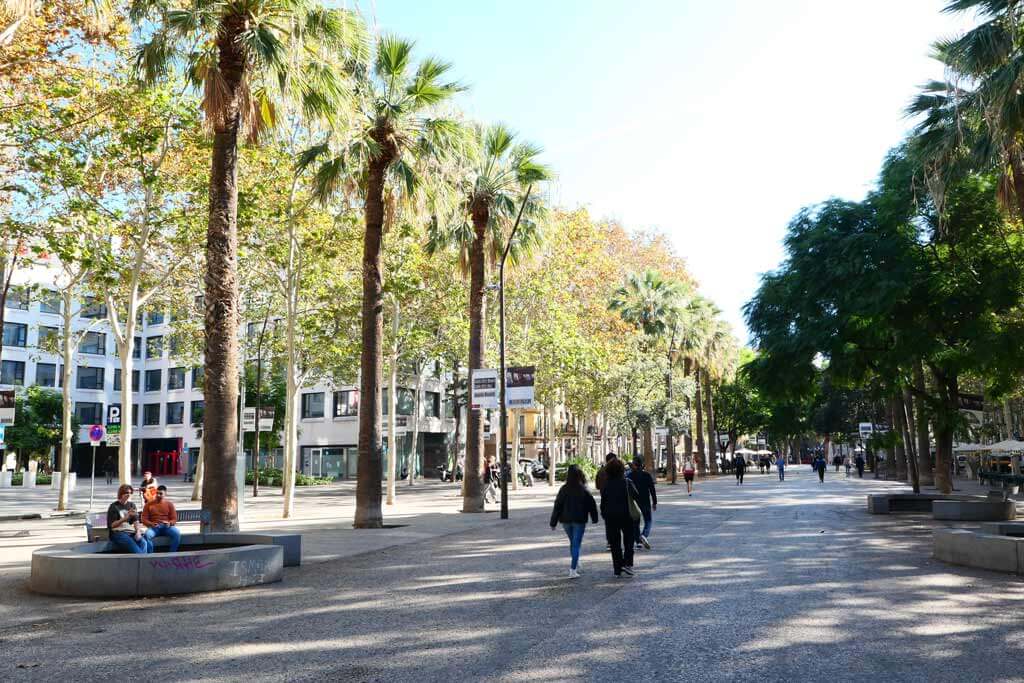
Rambla del Raval is one of the newest ramblas in the city. Just 250 meters long, the Rambla del Raval has plenty of street art, awesome restaurants, and lively bars.
The best spot to stop by is the famous Botero Cat, by Colombian artist Fernando Botero. This is a wandering cat, as it has been wandering around the city since it was purchased in 1987 until 2003, when found its happy place in El Raval.
Another place worth a stop is the rooftop bar of Hotel Barceló Raval. A great hotel for your Barcelona explorations, its bar is also open to non-guests and is perfect for enjoying a delicious cocktail while admiring an amazing 360-degree view of Barcelona. The best time to visit the hotel’s panoramic terrace? At sunset, of course!
7. Enriqueta Martí, the Vampire of El Raval
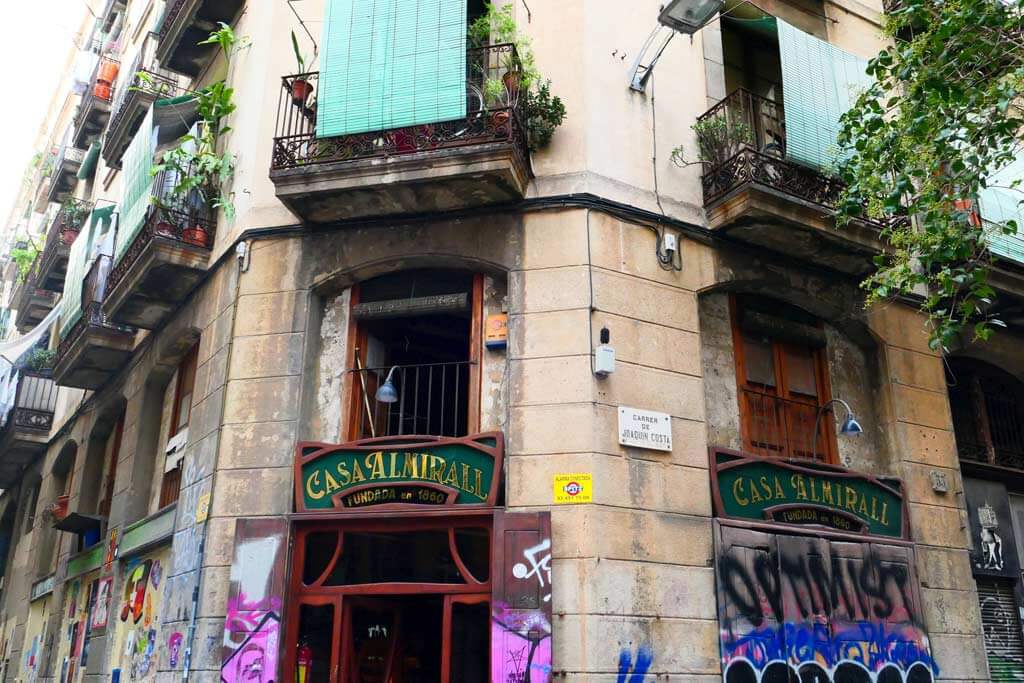
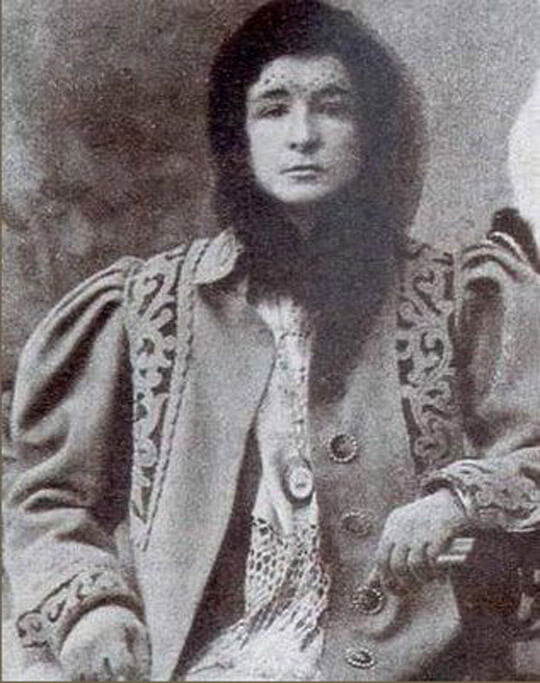
Besides being Barcelona’s most popular neighborhood, El Raval has always had a rather dodgy reputation. The city’s former red light district, the area was home to Spain’s most notorious serial killer, Enriqueta Martí, also known as The Vampire of El Raval.
Her story is set in the former Carrer Ponent, today named Carrer de Joaquin Costa, at the start of the 20th century. As a young woman, Enrqiueta Martí moved to Barcelona, where she worked as a prostitute and “healer.” To prepare the potions that she claimed could cure tuberculosis and other diseases, she used the flesh and blood of children she routinely kidnapped and murdered.
The terrible deeds of Enrqiueta Martí went on for around 20 years, and it is unclear how many kids she killed. In 1912, Enrqiueta Martí was finally stopped by police, who found the remains of some of her victims in her home in Carrer Ponent. The woman never stood trial for her crimes (there’s the suspicion some important people were also involved in the crimes) but was nevertheless arrested and died in prison at the hands of other inmates.
Walking down Carrer de Joaquin Costa today, with all its restaurants and shops, you would never think that once it was the theater of something so gruesome!
8. Plaça de Salvador Seguí
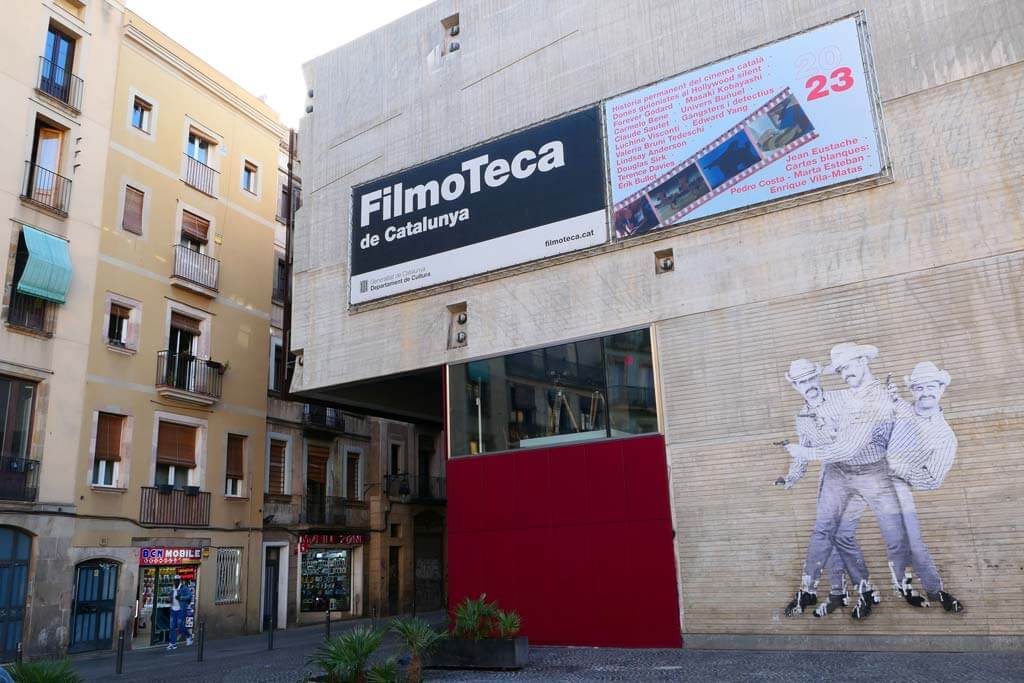
Plaça de Salvador Seguí is another lovely square in El Raval’s neighborhood. The original location of the Keith Haring mural, this square, used to be rather sketchy in the past. In the early 2000s, it was included in a requalification project, and today, it is a safe and lively hang-out spot.
Around Plaça de Salvador Seguí are some unmissable spots. Lovers of old movies can’t miss the Filmoteca de Catalunya, which also features the La Monroe Bar, a great venue for an apéritif before or after a good old movie.
Another not-to-be-missed venue is the iconic Bar Marsella, famous for being where artists like Dalí, Picasso, and Hemingway went to drink absinthe.
9. Mercat de la Boqueria
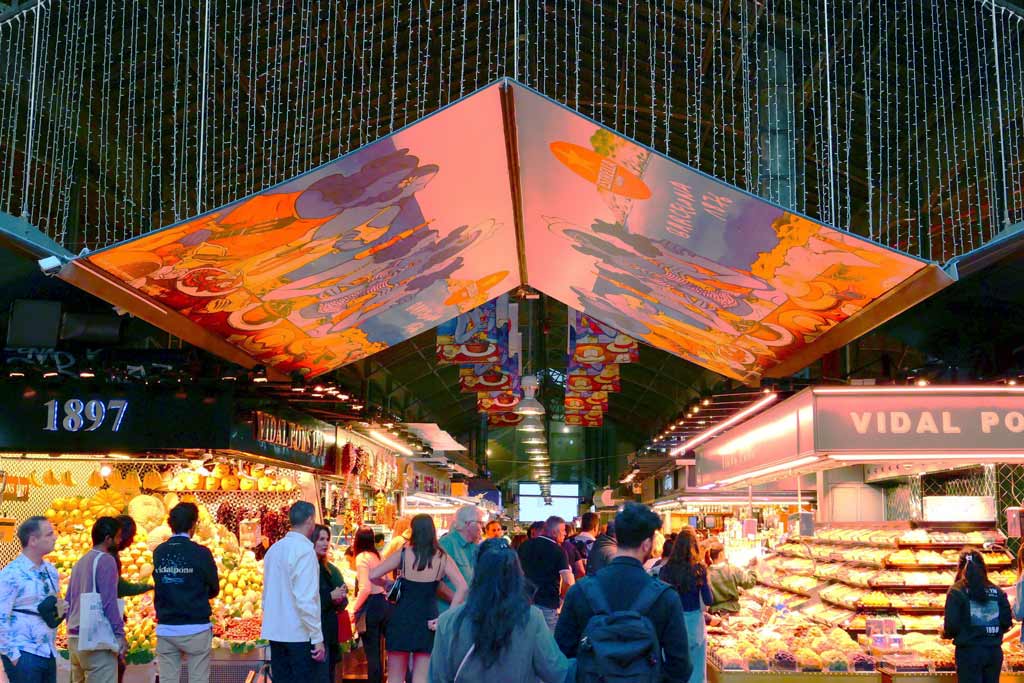
One of the most popular landmarks in Barcelona, La Boqueria (91 La Rambla) is a beautiful covered market which has been in business since 1836.
La Boqueria is a gourmand’s delight because of the many food stalls and eateries that prepare fresh meals and tapas to enjoy all day since the market is open every day until quite late.
Although it is very touristy, La Boqueria is still the locals’ favorite grocery store, where you will find the best quality produce in Catalonia, so there’s always a good mix of tourists and locals.
10. Palau Güell
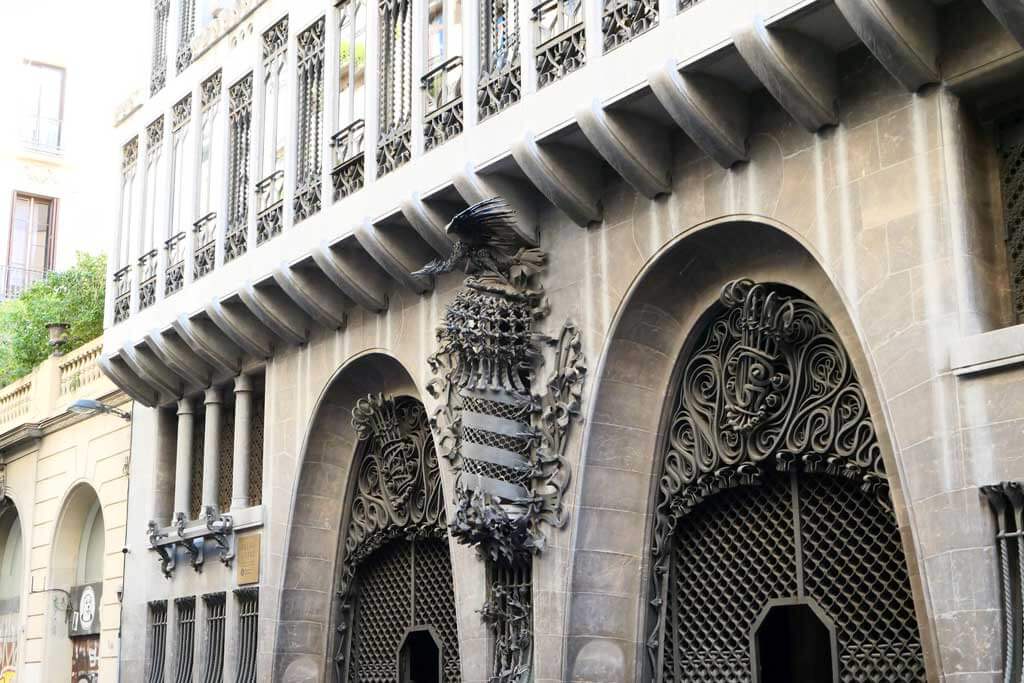
In the El Raval neighborhood, you can admire one of the architectural wonders of Modernism in Barcelona.
Palau Güell (3-5 Nou de la Rambla, closed on Mondays) was the private mansion of industrial tycoon Eusebi Güell, built by Gaudí between 1886 and 1888. Today, a UNESCO-listed building, Palau Güell is a masterpiece, considered one of the world’s first modernist buildings ever made.
To build Palau Güell, Gaudí was inspired by Islamic art. Step inside the mansion to see it for yourself: everywhere are beautiful arches, pinnacles, and the “trencadís,” the peculiar mosaic made from irregular pieces of broken tiles that would later become Gaudí’s main signature. You will also find his famous chimneys on the roof – Click here to book your tickets to the Palau Güell
To admire Palau Güell day and night, book a room at the Gaudi Hotel. Located just in front of Gaudi’s iconic building, you will have unbeatable views from your room or the rooftop terrace!
11. Museu Marítim de Barcelona
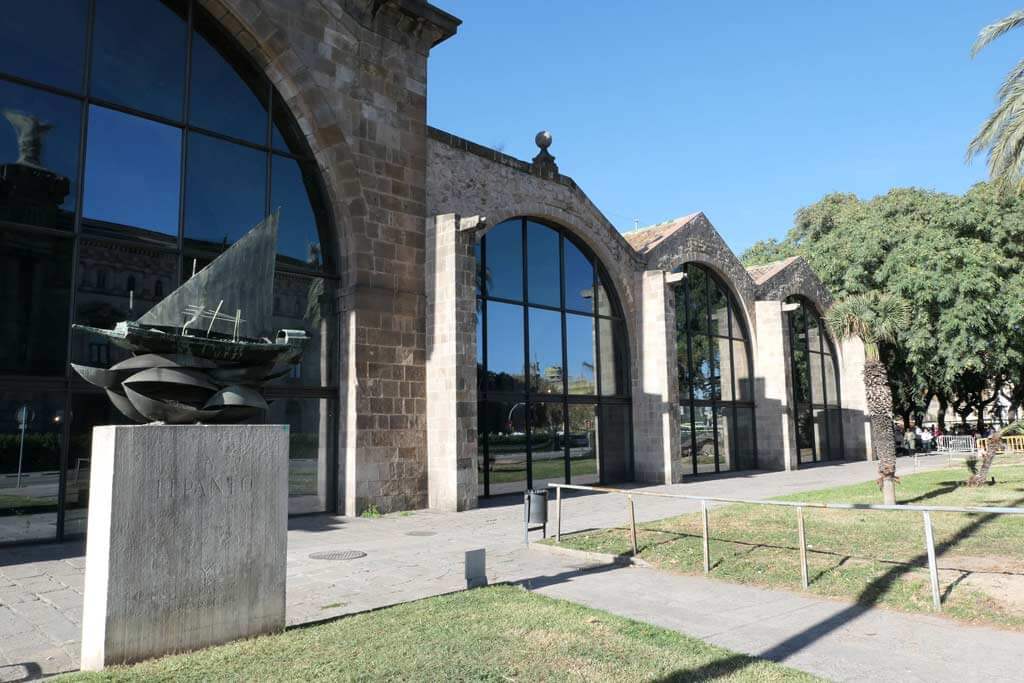
One of the best museums in Barcelona, the Maritime Museum (Avinguda de les Dressanes), will strike you for its location in the city’s Medieval dockyards. This impressive structure is a perfect example of civil Gothic architecture in Catalonia and is the ideal venue for housing the models of ships on display, both made to scale or in real size.
The highlight of the Museu Marítim de Barcelona is the full-scale replica of the stunning Royal Gallery, it is impressive!
The museum also features a peaceful garden (Jardí del Museu), which is open to non-visitors as well, which is a lovely spot for a coffee or a drink in the summer, far from the crowds of La Rambla – Click here to book your tickets to the Museu Marítim de Barcelona

